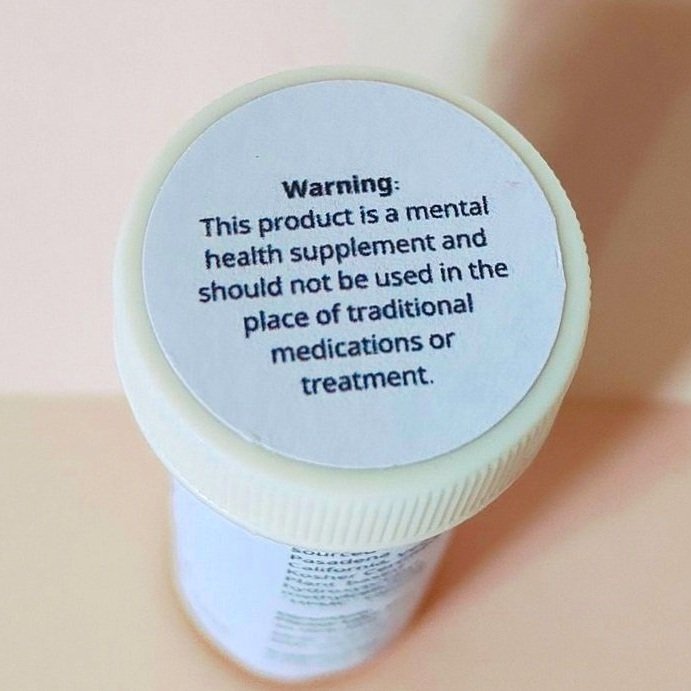Placebo Pill Pack
Purpose & Administration
Placebo treatments are harmless substances or procedures that are prescribed more for their psychological benefits, as opposed to physiological effects. They can be used for treating mental, emotional, relational, and motivational goals. Please refer to your medical or mental health professional for recommendations on instructions regarding frequency and dose of administration. The “Mild & Safe” pill (which should be provided to patients or clients for no charge) is appropriate for all ages and all symptoms, as it is strictly filled with rarified air. The “Powerful & Risky” pill ($350 per pill) should not be given to anyone with gastrointestinal, esophageal, stomach, or bowl symptoms or disorders, as it is filled with cayenne pepper. Placebo pills can also be used to secure the trust of psychotic patients refusing medication, and can discreetly be exchanged for real medication by patients’ caretakers.
Rationale
Why Two Versions? Research shows that more powerful-appearing, expensive treatments effect more positive clinical results in treatment (1)
Why Rarified Air?Manufactured desire & luxury marketing appears to have positive motivational effects in populations affected by the forces of capitalism (2).
Why Cayenne? Negative side effects (in research, a burning sensation caused by capsaicin), have been associated with greater positive expectations of treatment and actual effects of treatment, as measured by lower reported levels of pain (3).
References & Ongoing Research
Waber, R. L., Shiv, B., Carmon, Z., & Ariely, D. (2008). Commercial features of placebo and therapeutic efficacy. JAMA, 299(9), 1016–1017. https://doi.org/10.1001/jama.299.9.1016
Ariely, D. (2011, May). Column: The upside of useless stuff. Harvard Business Review. https://hbr.org/2011/05/column-the-upside-of-useless-stuff
Schenk, L. A., Fadai, T., & Büchel, C. (2024). How side effects can improve treatment efficacy: a randomized trial. Brain : a journal of neurology, 147(8), 2643–2651. https://doi.org/10.1093/brain/awae132
Purpose & Administration
Placebo treatments are harmless substances or procedures that are prescribed more for their psychological benefits, as opposed to physiological effects. They can be used for treating mental, emotional, relational, and motivational goals. Please refer to your medical or mental health professional for recommendations on instructions regarding frequency and dose of administration. The “Mild & Safe” pill (which should be provided to patients or clients for no charge) is appropriate for all ages and all symptoms, as it is strictly filled with rarified air. The “Powerful & Risky” pill ($350 per pill) should not be given to anyone with gastrointestinal, esophageal, stomach, or bowl symptoms or disorders, as it is filled with cayenne pepper. Placebo pills can also be used to secure the trust of psychotic patients refusing medication, and can discreetly be exchanged for real medication by patients’ caretakers.
Rationale
Why Two Versions? Research shows that more powerful-appearing, expensive treatments effect more positive clinical results in treatment (1)
Why Rarified Air?Manufactured desire & luxury marketing appears to have positive motivational effects in populations affected by the forces of capitalism (2).
Why Cayenne? Negative side effects (in research, a burning sensation caused by capsaicin), have been associated with greater positive expectations of treatment and actual effects of treatment, as measured by lower reported levels of pain (3).
References & Ongoing Research
Waber, R. L., Shiv, B., Carmon, Z., & Ariely, D. (2008). Commercial features of placebo and therapeutic efficacy. JAMA, 299(9), 1016–1017. https://doi.org/10.1001/jama.299.9.1016
Ariely, D. (2011, May). Column: The upside of useless stuff. Harvard Business Review. https://hbr.org/2011/05/column-the-upside-of-useless-stuff
Schenk, L. A., Fadai, T., & Büchel, C. (2024). How side effects can improve treatment efficacy: a randomized trial. Brain : a journal of neurology, 147(8), 2643–2651. https://doi.org/10.1093/brain/awae132
Purpose & Administration
Placebo treatments are harmless substances or procedures that are prescribed more for their psychological benefits, as opposed to physiological effects. They can be used for treating mental, emotional, relational, and motivational goals. Please refer to your medical or mental health professional for recommendations on instructions regarding frequency and dose of administration. The “Mild & Safe” pill (which should be provided to patients or clients for no charge) is appropriate for all ages and all symptoms, as it is strictly filled with rarified air. The “Powerful & Risky” pill ($350 per pill) should not be given to anyone with gastrointestinal, esophageal, stomach, or bowl symptoms or disorders, as it is filled with cayenne pepper. Placebo pills can also be used to secure the trust of psychotic patients refusing medication, and can discreetly be exchanged for real medication by patients’ caretakers.
Rationale
Why Two Versions? Research shows that more powerful-appearing, expensive treatments effect more positive clinical results in treatment (1)
Why Rarified Air?Manufactured desire & luxury marketing appears to have positive motivational effects in populations affected by the forces of capitalism (2).
Why Cayenne? Negative side effects (in research, a burning sensation caused by capsaicin), have been associated with greater positive expectations of treatment and actual effects of treatment, as measured by lower reported levels of pain (3).
References & Ongoing Research
Waber, R. L., Shiv, B., Carmon, Z., & Ariely, D. (2008). Commercial features of placebo and therapeutic efficacy. JAMA, 299(9), 1016–1017. https://doi.org/10.1001/jama.299.9.1016
Ariely, D. (2011, May). Column: The upside of useless stuff. Harvard Business Review. https://hbr.org/2011/05/column-the-upside-of-useless-stuff
Schenk, L. A., Fadai, T., & Büchel, C. (2024). How side effects can improve treatment efficacy: a randomized trial. Brain : a journal of neurology, 147(8), 2643–2651. https://doi.org/10.1093/brain/awae132


